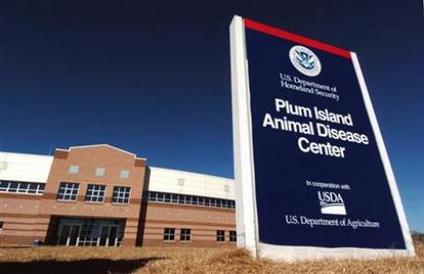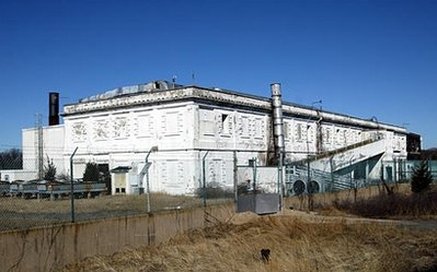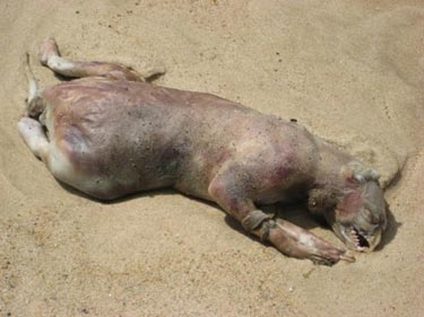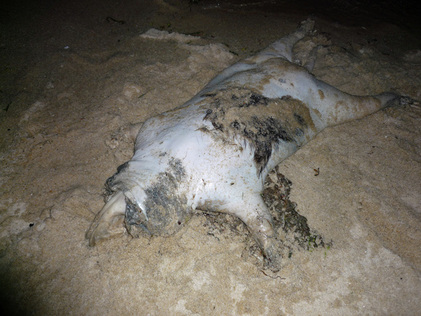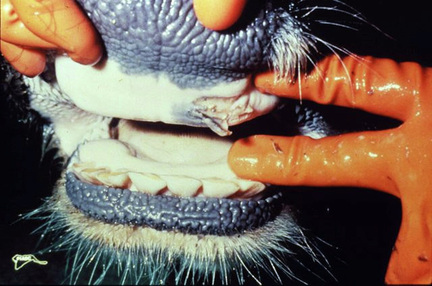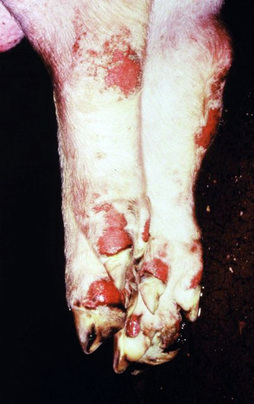Urban Soldier
Plum Island: Altering nature's design

Plum Island Animal Disease Control Center (PIADC) is located in the center of Plum Island. The island is off the shores of Connecticut, two miles from Long Island, NY. Plum Island has its own fire department, water treatment plant and power plant and wild animals are killed on sight if found. This is a United States federal research facility dedicated to the study of animal diseases and is part of the DHS Directorate for Science and Technology. PIADC’s goal can be put into three main groups; Diagnosis, research and education. Teaching and training veterinarians in foreign animal diseases. Since 1954, its aim has been to protect American livestock from disease. Focusing on foot and mouth disease in cattle, after the outbreak in Canada and Mexico that same year. Started by the U.S. Army, Plum Island is now owned by the Department of Homeland Security.
The Island was open to news media in 1992 for the first time. The Department of Agriculture was issued an $111,000 fine in 1995 for storing hazardous chemicals on the premises. Long Island activists stopped the center from growing to add diseases that affects humans in 2000. In that case a Biosafety Level 4 designation would be needed. Congress in 2002 would again acknowledge the plan.
Media in 2002 began reporting that people within the scientific community and government wanted the lab closed; suspecting the threat of foot and mouth disease was so obscure that the facility didn’t deserve its $16.5 million yearly budget.
Scientists at Plum Island study over 40 foreign animal diseases and various domestic diseases. Freezers within the facility contain samples of polio diseases. In 1991, these freezers were vulnerable after a power outage caused by a hurricane, raising safety concerns. Congressional law designates that live foot and mouth disease can’t be studied on the mainland in the U.S. PIADC is the only lab in the U.S. implemented with research facilities that enable the study of foot and mouth disease making it one a kind.
The contents within this location are very dangerous if they were to somehow get outside the facility and into population. The consequences could be catastrophic. In 1978, the foot and mouth disease was released to animals outside as well as two instances where the disease was released within the facility. The disease was annihilated from the US in 1929, except for the samples at Plum Island. The level of security is questionable. Individuals with connections to terrorist groups have been caught with information about Plum Island. In 2003, a whistleblower named Jim McCoy was fired after he raised concerns about health within the facility.
A Nazi scientist by the name of Erich Traub established the Plum Island facility after the war. He was bought to the U.S. under Operation Paperclip. It’s believed that he intended to set up the same kind of germ warfare lab he had in Germany during the war. He conducted experiments on insects and ticks for research in biological warfare. Traub invented the concept of injecting ticks with animal diseases and then release the ticks to be used as bio-weapons. This has caused many to believe that he is the creator of Lyme disease resulted by an experiment that got out of control. He has been coined as the “Godfather” of Plum Island.
Amid the Cold War era, a confidential biological weapons project directed at livestock was started at the facility. The anti-animal bio-weapons program was assembled to “establish and pursue a program of research and development of certain anti-animal bio-weapons agents.” This project is very controversial and has made Plum Island itself a questionable site. Research on biological weapons did not stop until the program was ended in 1969 by then President Nixon. The knowledge of biological warfare projects on Plum Island was denied for years by the U.S. government. In 1993, documents surfaced exposing that experiments were indeed carried out at the facility. Again in 2003, there were documents attained that stated that there were attempts to manipulate camel pox so they would be more similar to chicken pox. Many consider this to be bio-weapons research.
Skeptics believe that the public is being deceived with this program and argue that it's just a biological weapons research project masquerading as animal research. Workers at the Plum Island lab are said to be exposed to dangerous diseases and are advised not to have pets or visit zoos. This means diseases that are supposed to be restricted to animals are being exposed to humans.
The U.S. government has plans to move this bio-lab to the mainland. Possible locations include North Carolina, Mississippi, Kansas, Georgia and Texas. No NBAF is an organization leading the fight to stop the bio-lab from being moved to Manhattan Kansas. Because the foot and mouth disease is so deadly, it's an immediate threat in several ways. An accidental outbreak would cause a pandemic, exports of beef would be being shut down from the rest of the world and areas would need to be quarantined.
As if the controversy over the project’s true objectives isn’t enough, there are creatures that have washed ashore on the beaches of Montauk, NY. All dubbed with the name Montauk monster. The first creature was found in July 2008. Scientists have not been able to explain what species these creatures are. Locals that follow these incidents say that the creatures are some kind of crossbreeds. A mutated male human with elongated fingers was the last to wash ashore on January 14th, 2010. The body has five holes drilled into the head suggesting some kind of neurosurgery had been done. The body has never been identified and the case remains unsolved. This may be a indication to some that not only are they experimenting on animals, but on humans as well. Experts say that the turbulent tides and currents make it likely that these creatures could’ve very well come from Plum Island.
There are more than 1300 similar labs across the country. The lack of security remains an ongoing issue. I think we can safely make the assumption that there may be a lab near you. The danger of tinkering with nature seem unethical and poses a immediate threat to the safety of our health. The concept of crossbreeding animals is something right out of a sci-fi story, but as with many things in life, truth is sometimes stranger than fiction.
DHS Directorate for Science and Technology: The Under Secretary of Homeland Security for Science and Technology is a political leadership within the U.S. Dept of Homeland Security. Overseeing the activities of six main divisions: Explosive, Chemical and Biological, Command, Control and Interoperability, Human Factors and the Infrastructure and Geophysical divisions.
Foot and mouth disease (FMD) also knows as Hoof and mouth disease): A highly contagious and often fatal viral disease of cloven hoofed animals such as cattle, water buffalo, sheep, goats, pigs, antelope, bison and deer. Humans are rarely affected. Signs of infection in animals include high fever, blisters inside the mouth and on the feet, weight loss and declining milk production in cows. This disease is transmitted in many different ways like close contact to animal spread or inanimate objects. Clothes and skin of animal handlers, standing water and uncooked food scraps containing infected animal products can harbor the virus. The U.S. has had 9 FMD outbreaks since 1870. United Kingdom, Taiwan, China, Japan and South Korea have also experienced outbreaks.
Biosafety Level 4: The level of the bio-containment precautions required to isolate the dangerous biological agents in an enclosed facility. Levels of containment range from the lowest safety level 1 to the highest level at 4.
Erich Traub (Germany 1906-1985): German veterinarian and scientist/virologist who specialized in FMD, Rinderpest abd Newcastle disease. He was a member of the National Socialist Motor Corps, a Nazi motorist corp and served as a lab chief of the Nazis leading bio-weapons facility. Rescued from the Soviet zone of Germany after WWII, he was brought to the U.S. under Operation Paperclip.
Jim McCoy: Former employee at the PIADC facility was fired for raising concerns about the safety within the facility itself.
Operation Paperclip: A former project used to recruit the scientists of Nazi Germany for employment within the U.S. after WWII. One purpose of this operation was to deny German scientific knowledge and expertise to the then USSR and the United Kingdom. The public records of these scientists were erased and new documents were created with false employment and political biographies. Once proof of their “Nazism was removed, the U.S. government granted the scientists security clearance to work in the U.S. The name paperclip came from the paperclips used to attach the scientists’ new political identity to their to their “U.S. Government Scientist” personal files.
Montauk monster: An unidentified creature that washed ashore dead on a beach near the business district of Montauk, NY in July 2008. There were several other creatures that have been found as well.
No NBAF: An organization aimed at fighting to keep the National Bio and Agro-Defense Facility out of the heartland.
http://nonbaf.wordpress.com/

